Towards the end of my visit to the archaeological site of the ancient Maya people, Chichén Itzá, I finally paid a little more attention to the central and the biggest pyramid at the site that is simply called El Castillo, meaning, the Castle.
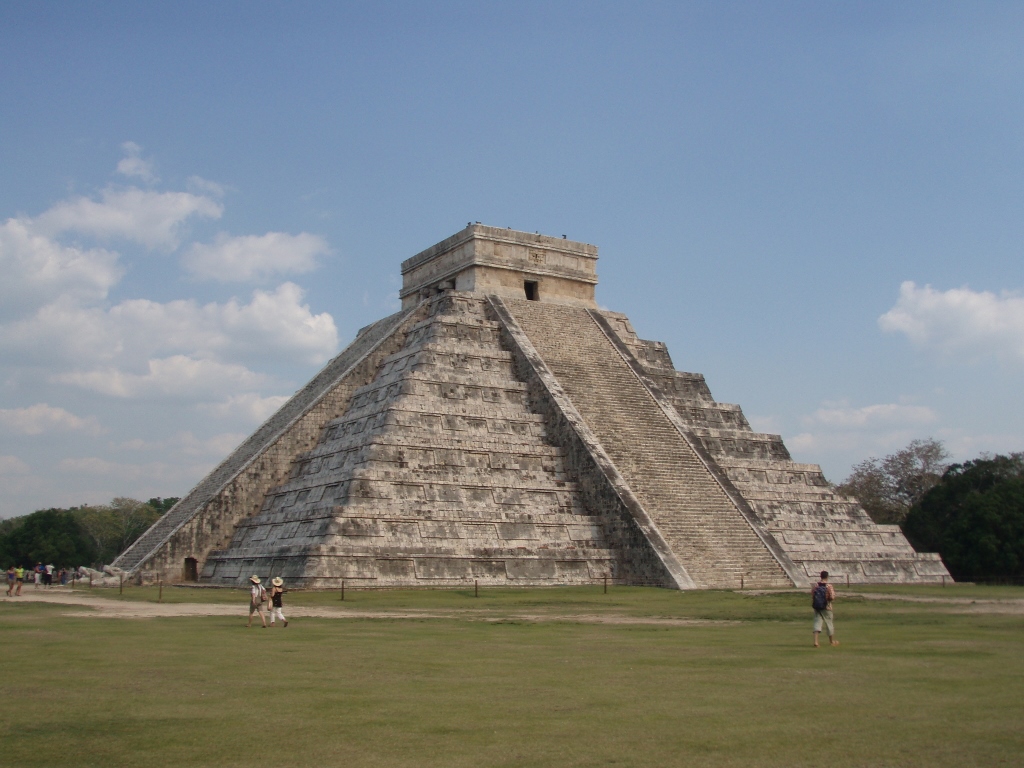 El Castillo
El Castillo
This name was given to the temple by the Spaniards when they started with their conquests in this part of the world, but the pyramid is often also called the Temple of Kukulkan.
I have already mentioned this deity before, but now let me reiterate a few details since I’m talking about a temple dedicated to it. Kukulkan is depicted as a feathered serpent and by its characteristics it is very similar to the Aztec deity Quetzalcoatl whose cult dominated the territories that today constitute central Mexico. Still, although the cult of Kukulkan used to spread all the way to the Guatemalan highlands, in the north of the Yucatán peninsula this deity constituted the base of the “state religion” surpassing its “traditional” status of a “common” messenger between the king and the gods. For this reason, almost each structure in Chichén Itzá has depictions of Kukulkan on it, which may also be seen in the following photo that shows a part of the stairway of the Platform of Jaguars and Eagles which is adorned with the head of Kukulkan on its top.
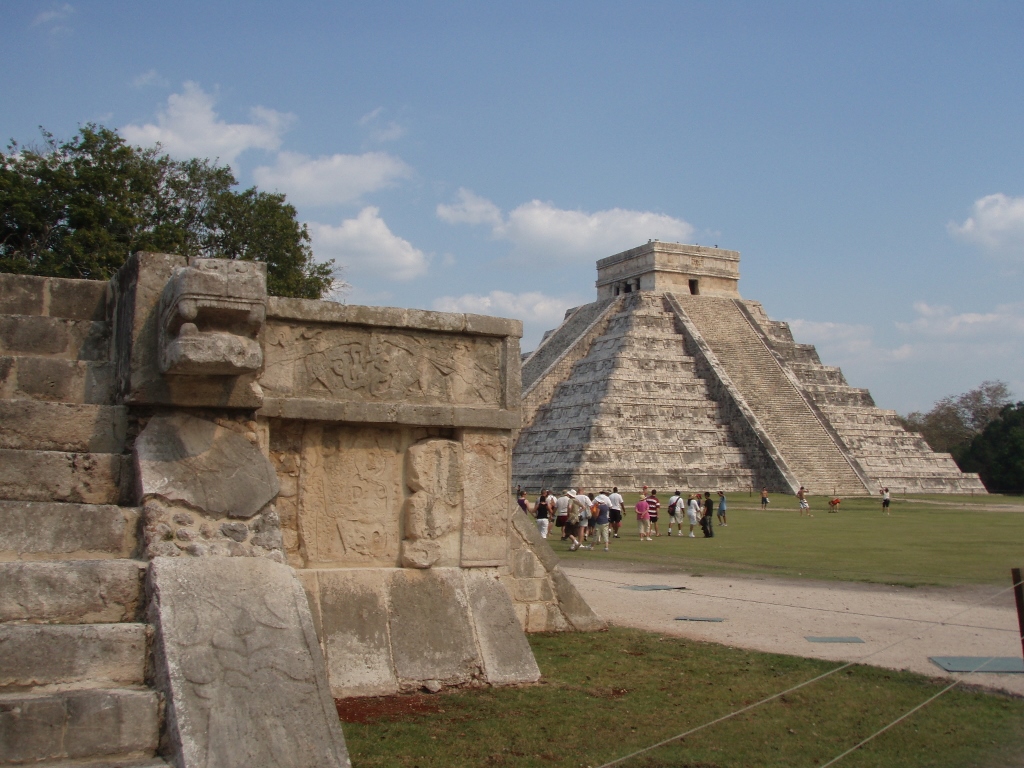 Platform of Jaguars and Eagles to the left and El Castillo to the right
Platform of Jaguars and Eagles to the left and El Castillo to the right
Still, the most important temple in Chichén Itzá dedicated to Kukulkan is certainly El Castillo.
This is an imposing step pyramid which has a square ground plan with the length of a side of around 55 metres. The pyramid has nine “terraces” that give it the stepped shape, since they decrease towards the top at the angle of 53 degrees and each such “floor” is around 2.5 metres high, which means that up to the top of the platform El Castillo is around 24 m high. On the top of the platform there is a temple that is around 6 metres high, which means that the height of the whole structure is around 30 metres.
On each of the four sides there are stairways that are slightly pulled out from the line of the square’s sides and these stairways go up to the top at the angle of 45 degrees. I have already mentioned that in the past it was permitted to climb up to the top of El Castillo, but once a woman fell down the stairs and got killed, after which the climbing was forbidden.
In addition, although in one place it is possible to see a “door” leading into the pyramid’s interior, the entrance is not allowed there either. It needs to be said that the ancient Mesoamerican civilisations sometimes had the habit of building structures literally over the already existing ones and this is the case with El Castillo. The archaeological researches carried out during the 20th century corroborated this and thus the opening was made at the time in order to allow access to the interior temple where the statue of Chacmool and a throne in the shape of a jaguar were found in the temple chamber.
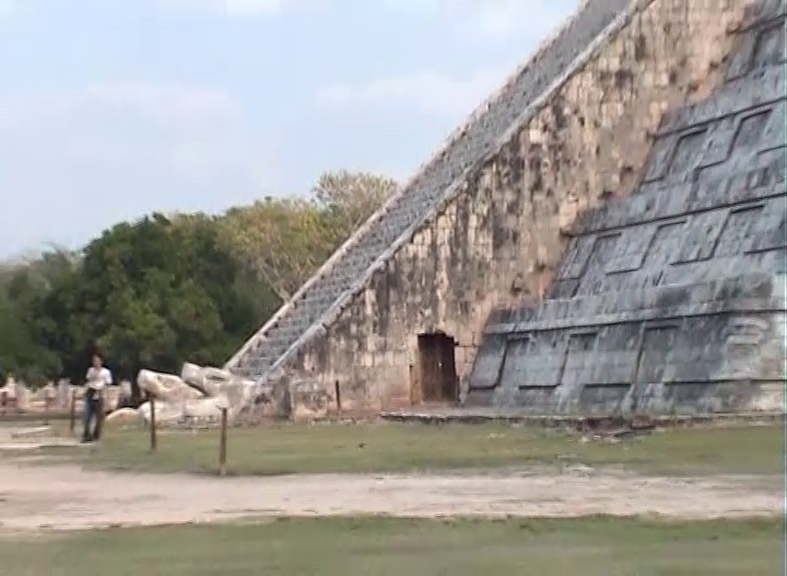 El Castillo – passage made on the northern stairway
El Castillo – passage made on the northern stairway
But, let me go back to the story about El Castillo that may be observed from the outside. It is estimated that the pyramid was built at some point during the period from the 8th to the 12th century CE and by itself it constitutes an architectural marvel in its own right. It generally faces the four cardinal points, but it does deviate from the exact points by 22 degrees for which the ancient Maya certainly had their reasons.
Although all four stairways have balustrades, since the temple was dedicated to deity Kukulkan, the stairway on its north side that faces the direction of the Sacred Cenote and the Venus Platform, which makes it the “most important” one, is decorated by low reliefs that depict the body of the feathered serpent, while at the very bottom there are the heads of the feathered serpent, i.e., of deity Kukulkan laid down on the ground.
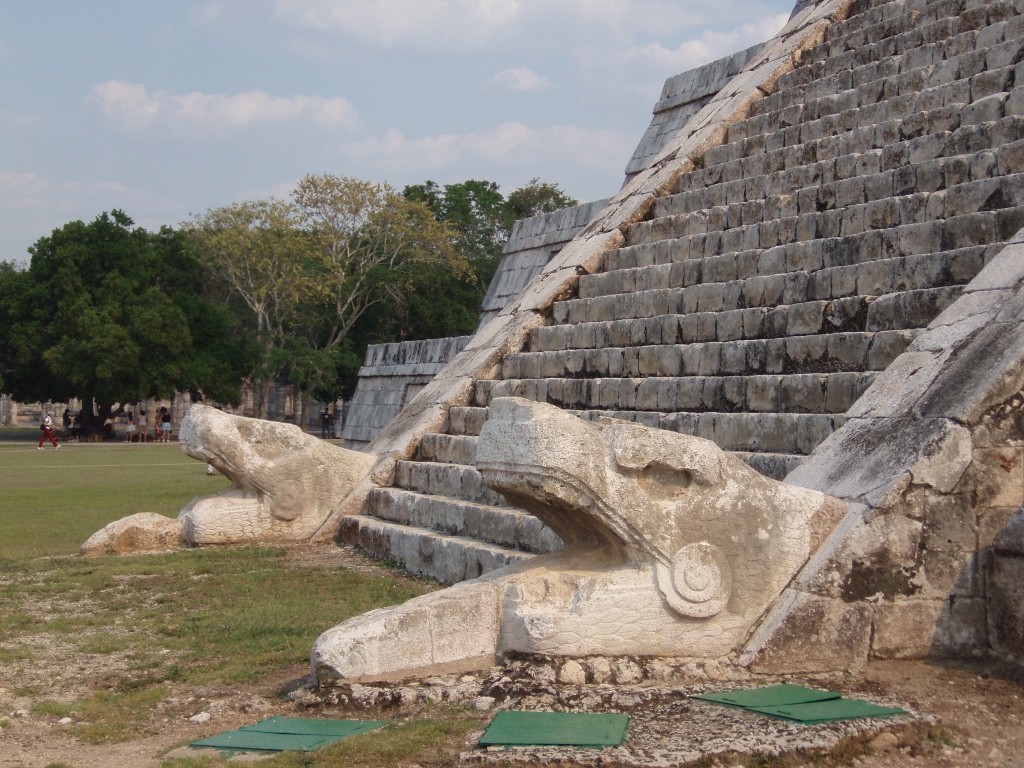 Heads of deity Kukulkan at the bottom of the stairway on the north side of El Castillo
Heads of deity Kukulkan at the bottom of the stairway on the north side of El Castillo
The stairways themselves are also impressive since they consist of 91 steps, on each of the four sides, plus the upper platform which in total accounts for 365 days in a year (91x4+1). This is not the only symbolic element on El Castillo, but it is simple enough to be explained. Generally, all of the symbolism is linked to the Maya calendar and their masterful knowledge of astronomy.
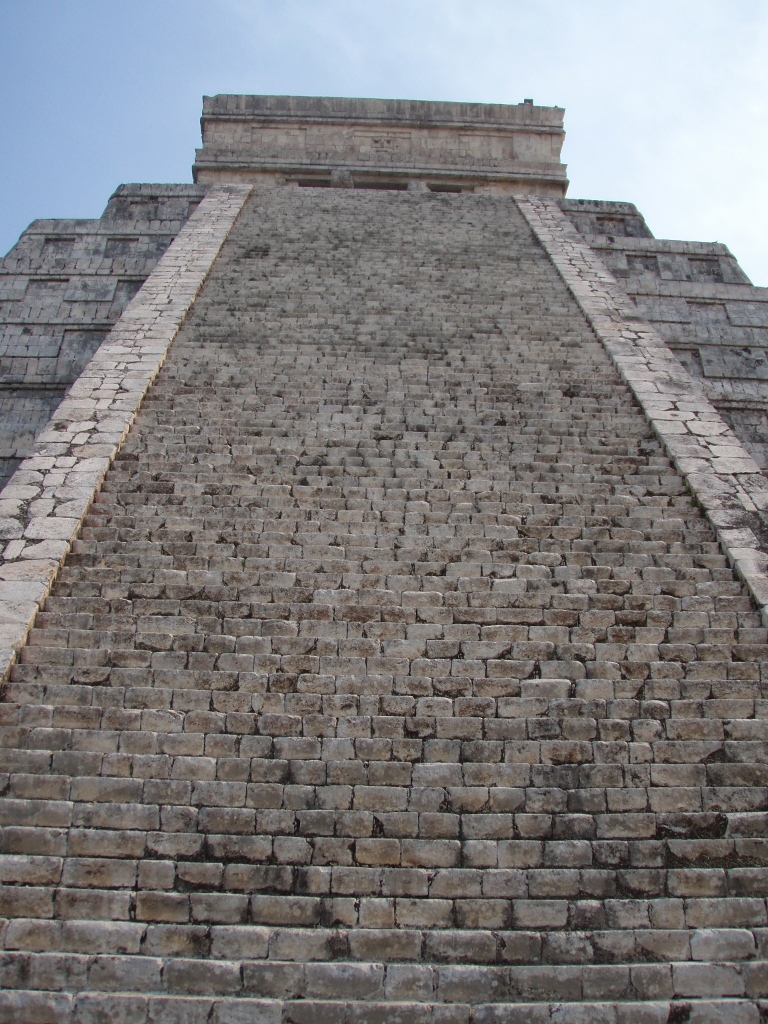 Stairway on the north side that leads to the top of El Castillo
Stairway on the north side that leads to the top of El Castillo
In addition, what this pyramid is perhaps best known for and what certainly makes it most impressive is the light effects that appear twice a year, at the time of the Spring and the Autumn Equinoxes.
Namely, at that time of the year, late in the afternoon, when the Sun is setting it lights the west side of the pyramid and the nine stepped terraces than create a shadow on the lateral side of the balustrade that extends on the west side of the north stairway that leads to the entrance into the temple and at the bottom of which there are the heads of Kukulkan. This creates a visual effect and an illusion that shows the body of a slithering snake that descends down the balustrade and ends precisely with the head at the bottom of the stairway. Nowadays, each year at the time of the Spring and the Autumn Equinoxes a large number of visitors gather here precisely to watch this phenomenon.
Although this is certainly a very impressive visual effect that suggests masterful knowledge of astronomy of the ancient Maya people and their skills in the practical application of astronomy in the sphere of architecture and irrespective of the broadly spread belief that this effect was made on purpose in order to determine the equinoxes, the research has shown that the effect may be seen in an identical way over the period of several weeks around the equinoxes, which means that by itself it could not help establish their precise dates just by observing the shadows on the north stairway of El Castillo. Be as it may, the effect that may be seen on the internet, if one cannot visit Chichén Itzá in those periods, is unquestionably very interesting.
On the other hand, this certainly inspires me to think about the civilisation primarily of the “western” world of the 21st century. To start with, the humans, especially the conquerors, feel the need to assign to the conquered civilisations the out-of-this-world achievements and magnificence, I guess in order to build up the value at the level of their national collective ego of their brutal conquests and then this somehow finds its way into the generally accepted history. Additionally, only one aspect that appears impressive is taken into consideration and then this aspect is given all the major attention and on the basis of that detail the story gets developed about the overall “high degree of development” of the given civilisation, while neglecting everything else.
As for Chichén Itzá, it “flourished” in the period from 600 CE to around 1200 CE, in terms that some of the stone structures that have survived to the present times were built here in this period. Although the Maya people certainly still exist in the form of ethnic groups that live throughout Central America, their “civilisation” has vanished relatively abruptly and the actual cause for this is not known.
There are different theories about this and it is mostly explained by climate change (which has become very popular in order to explain everything in this world) and the production of less and less food, while the number of residents in the cities that constituted this general cluster of the Maya civilisation kept going up, which almost certainly led to hunger. Although these cities within the territory inhabited by the Mayas waged wars more or less all the time, the hunger could certainly instigate mutual killing even more in order to get to the food. Now, my assumption is that the poor people not tied by anything to the given city could relatively easily decide to move to some other place or at least try to do that. On the other hand, the rulers, the noblemen and priests, in other words, those who led the “civilisational attainments,” were linked to their positions and probably also incapable and untrained to take care of themselves. In other words, since they had serious concrete problems such as hunger, they probably did not have either the will or the strength to deal with the construction of impressive stone structures, so I presume that over time they just quietly died out and thus came the end of the “civilisation.” If the Mayas were so great as a civilisation, how is it possible that they did not see on time that something was amiss with the produced quantity of food and the number of people?
The point is that Homo sapiens is very often an exceptionally inadaptable species and very unwilling to accept some changes. I think that the same may happen with our “civilisation” – if we implode and some of us survive, and if later there is some new development and those future archaeologist start coming across artefacts from our times, they will wonder how come the people from the 21st century did not take steps in order to prevent their demise, if it was clear to them that there were problems. This is because, on an average, Homo sapiens is rather stupid and lazy.
Let me give you an example: if the plastic is a problem, as is pointed out so often, let us begin, to start with, by very simply bringing ALL the beverages (water, milk, yogurt, refreshments,...) back from the plastic bottles into the glass ones. But, this will NEVER happen. Why? Well, it’s very simple, because there is already a very well developed business linked to the production of plastic bottles, there is already a very well developed business linked to the recycling of plastics... But, in order not to make this all about the naughty people who make money on this, I’m also certain that most of the buyers, the consumers, would not like to carry glass bottles around, as used to be done, and to replace them when buying new drinks in other glass bottles, because this would mean that they would have to think in advance, that they would have to make sure they do not break the bottles, then their purchase would be heavier to carry,... So, we are just waiting for the time to pass and for us to drown in the consequences of our own actions and decisions.
But, let me go back to the story about my sightseeing of the archaeological site of Chichén Itzá in 2008. When I finished with El Castillo, I started to look around the large clearing where I was standing. It was almost 4:30 pm and the site was soon to be closed, which meant that there were significantly fewer people than during the day. Again I looked in the direction of the Great Ballcourt and the Temples of the Jaguar. In the following photo it is possible to see a little better the stairway on the left-hand side that very steeply leads to the Upper Temple, as well as the entrance into the Lower Temple where in the middle, between the pillars, it is possible to discern the throne in the shape of a jaguar.
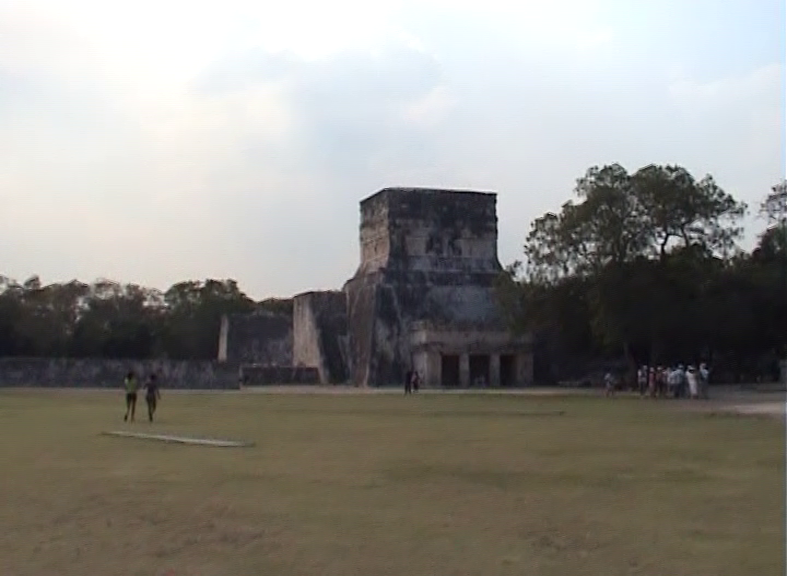 The Upper and the Lower Temples of the Jaguar
The Upper and the Lower Temples of the Jaguar
There was also the Temple of the Warriors lit by the setting Sun.
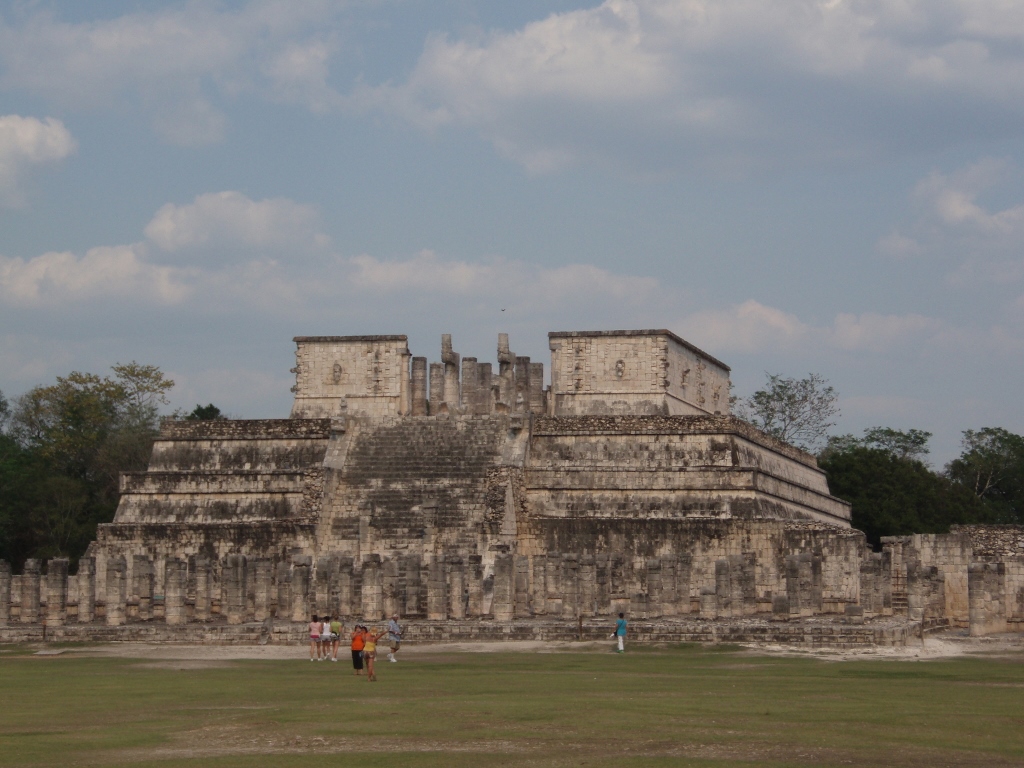 Temple of the Warriors
Temple of the Warriors
And certainly, before leaving the site, I looked back once again and admired yet again the impressive pyramid – El Castillo.
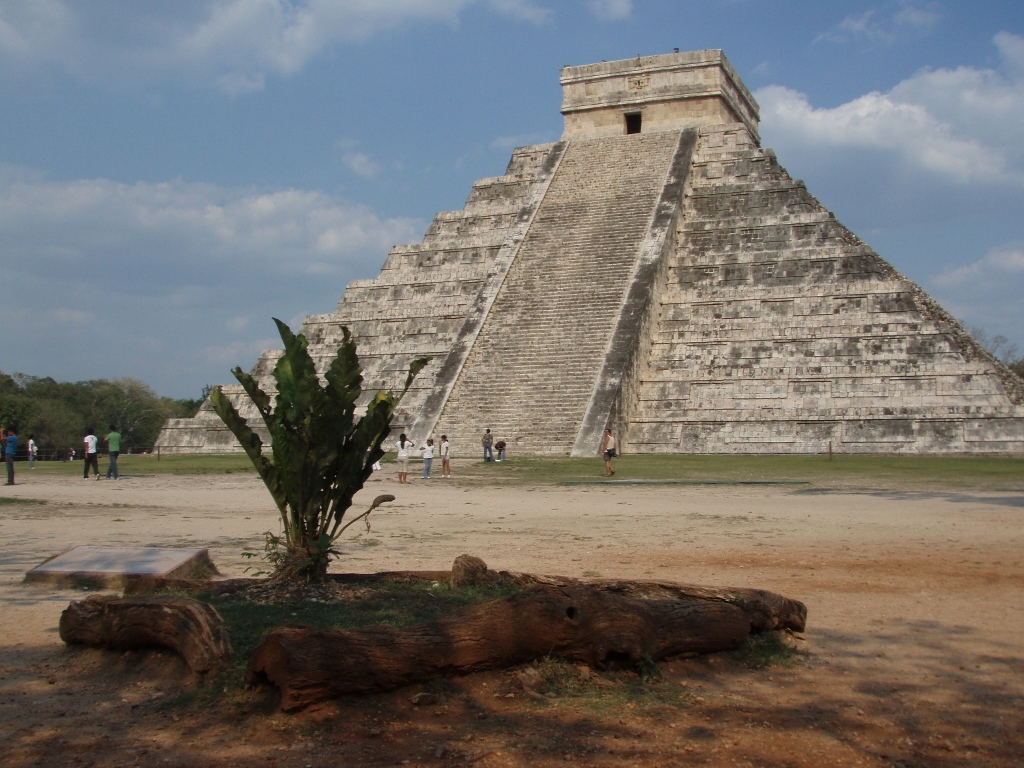 El Castillo, seen from the west
El Castillo, seen from the west
As it may be seen in the photos above, towards the closing of the site, there were both few visitors and few souvenir vendors, plus at that time the strength of the sunrays was smaller. Still, when I got to the toilet before continuing with my journey, I almost fainted when I saw my reflection in the mirror. I was very red in the face and I knew it was not because I got sunburns, but because of the heat and the exhaustion. It was the first time I saw myself in such a state and for a moment I was worried. But, apart from splashing my face with some fresh water, there was nothing else I could do, so I just went to get my backpack from the locker and then on to the coach terminal since I was continuing with my travel to the city of Merida.
As I intended when travelling from Cancun to Chichén Itzá in a much cooled down coach, now I got the small fleece blanket from my backpack and it was wonderful that I had it for I certainly needed it taking into account the overheated state of my body. And I was right. On the coach, the air-conditioning was turned up to the maximum again and although I must have seemed quite weird to the rest of the passengers, for me it was important that I felt very comfortable and well in my long-sleeve shirt and covered by the blanket.
Still, regardless of the temperature-related comfort I was feeling, I was also very anxious concerning my accommodation in Merida. Namely, I had absolutely no idea about where I was to spend the night. I had no reservation, I had no information about any hotels or guest-houses – nothing! Still, I hoped I would manage somehow. The journey from Chichén Itzá took almost two hours and I arrived in Merida a little before 7 pm.
When we got there, I got my backpack from the coach, placed it well on my back, while putting the small backpack in front of me and headed for the exit from the coach terminal. And there I came across – a tourist information stand! That evening, the person on duty was a José who gave me a map of the city, explaining it all nicely and recommending me a guest-house (hospedaje) the price of which was very good and as it turned out this accommodation was excellent. I had a very clean room, with an air-conditioning unit, a private bath, breakfast, use of computer with internet access, and everything was quiet and in a great place – 10 minutes on foot from the terminal and 5-10 minutes on foot from the very centre of the city.
Still, I first bought a ticket for a trip I planned to go to the following day and only then did I go to the guest-house. Leaving my things in the room, I quickly refreshed myself (by this time the colour of my face was back to normal again) and then I went to the centre where I changed the money, bought water and some snacks, and I was also delighted with the centre of Merida. Still, I felt quite exhausted, so I only walked to a nearby market around which there were local restaurants where I ate tacos with chicken. I love Mexican food and the dinner felt very good indeed.
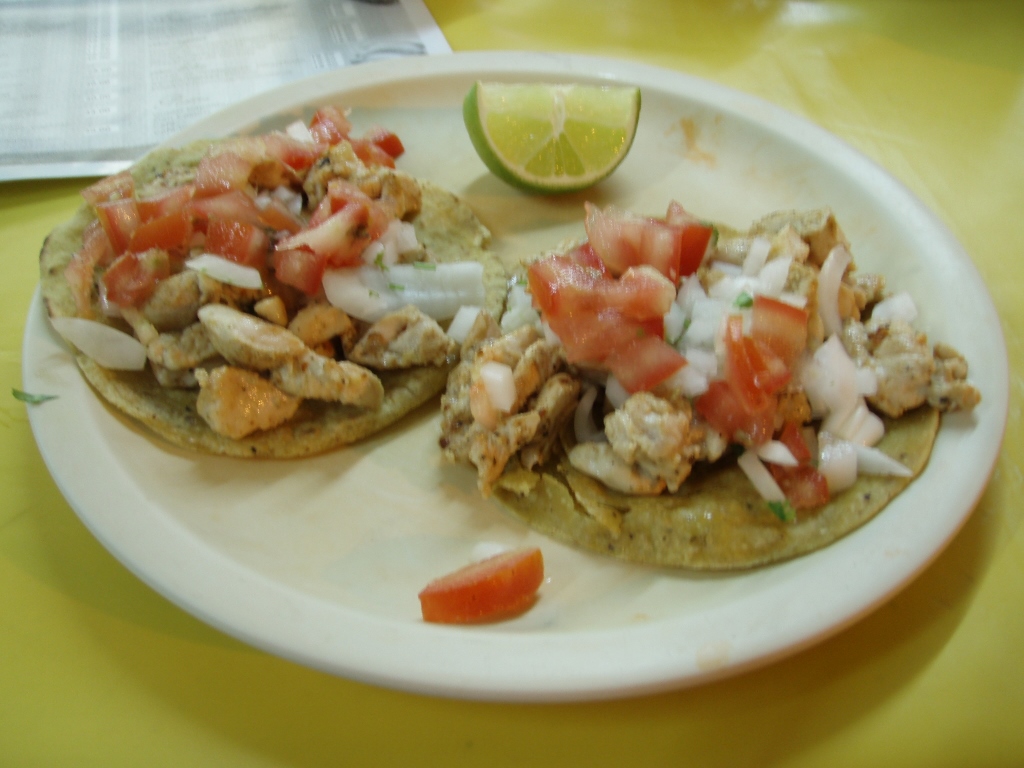 Chicken tacos
Chicken tacos
After the dinner, walking across the central square I headed for my guest-house. It was already dark and there were not too many people in the streets, but I liked the city very much and I looked forward to the following afternoon when I would have more time and strength to go for the local sightseeing. On the other hand, probably because of the tiredness and the exhaustion caused by the heat during the day, I felt a little low wondering what I was doing there, why I bothered going around the world instead of staying at my comfortable home, why all of that... But, since I was already there and there was no return, this all came to nothing more than purely rhetorical pondering.
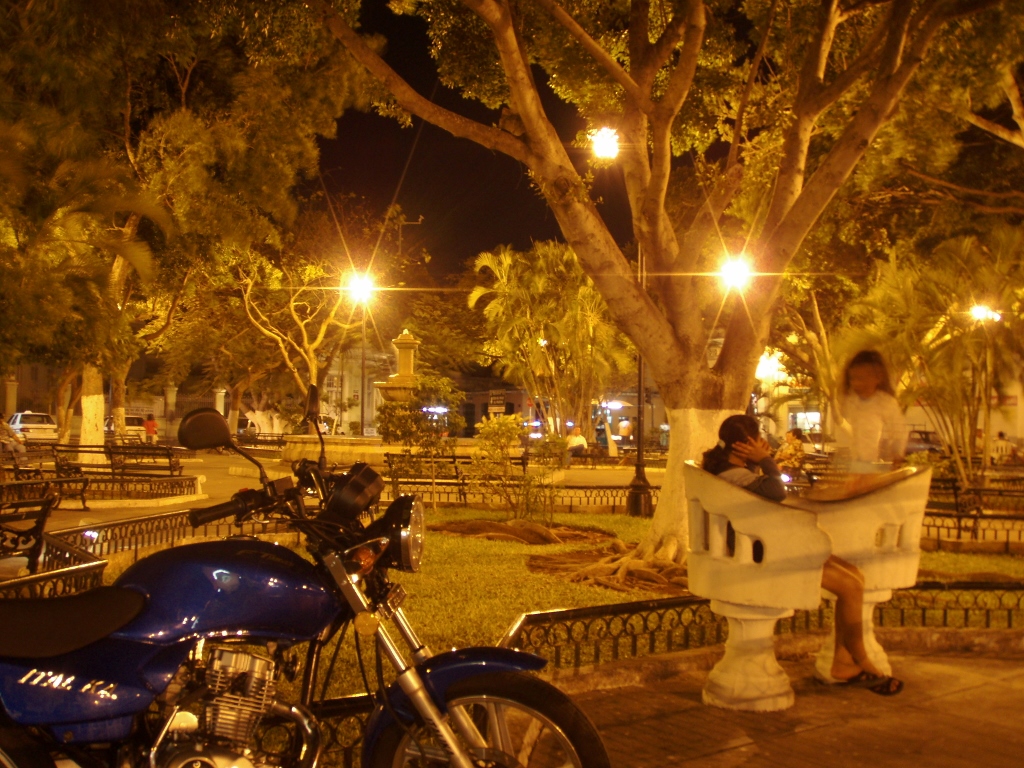 Grand Plaza (Plaza Grande) at night
Grand Plaza (Plaza Grande) at night